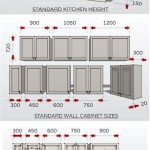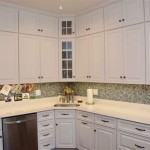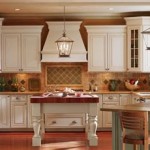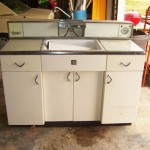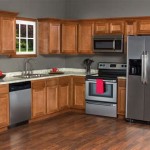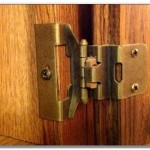Hanging Kitchen Cabinets Designs: A Guide to Optimizing Storage and Style
Hanging kitchen cabinets are a quintessential element of any well-designed kitchen, offering both practical storage solutions and aesthetic enhancement. From classic Shaker styles to contemporary designs, the options are vast and cater to diverse tastes and functional needs. This article explores the key considerations when choosing hanging kitchen cabinets, focusing on design aesthetics, functionality, and material choices. By understanding these factors, homeowners can make informed decisions to create a kitchen that is both stylish and efficient.
Design Aesthetics: Choosing the Right Style
When choosing hanging cabinets, the design aesthetic should align with the overall style of the kitchen. Traditional kitchens often gravitate towards classic styles like Shaker cabinets, characterized by simple, clean lines and recessed panels. These cabinets exude timeless elegance and are universally appealing. Modern kitchens, on the other hand, embrace minimalist designs with sleek lines, flat panels, and often incorporate bold colors or metallic accents. Transitional kitchens bridge the gap between traditional and modern, featuring elements of both styles with a focus on clean lines and subtle detailing.
Consider the following design elements when selecting hanging cabinets:
- Cabinet Doors: Choose between traditional raised panel doors, flat panel doors, or glass-front doors depending on the overall kitchen aesthetic.
- Hardware: Cabinet hardware, such as knobs and pulls, can significantly impact the style. Traditional kitchens often use simple knobs or pulls, while modern kitchens may prefer sleek, minimalist options.
- Finishing Touches: Cabinet finishes play a crucial role in the overall look and feel. Choices range from painted cabinets in vibrant colors to stained cabinets with a natural wood finish.
Functionality: Maximizing Storage and Efficiency
Hanging cabinets are essential for optimizing kitchen storage. They provide easy access to frequently used items while keeping countertops clutter-free. Consider the following functional aspects when choosing hanging cabinets:
- Cabinet Depth: The depth of hanging cabinets is a critical factor. Standard depths range from 12 inches to 24 inches, with deeper cabinets offering more storage capacity. However, excessive depth can make accessing items at the back challenging.
- Cabinet Height: The height of hanging cabinets should be carefully considered, taking into account ceiling height and the homeowner's reach. Tall cabinets provide ample storage space but may require step stools for accessing upper shelves.
- Cabinet Configuration: Different cabinet configurations can optimize storage efficiency. Consider using a combination of base cabinets and wall cabinets to maximize space without overwhelming the kitchen.
Material Choices: Durability and Style
The material used for hanging cabinets significantly impacts their durability, appearance, and overall cost. Common cabinet materials include:
- Wood: Wood cabinets are a classic choice, offering durability, warmth, and natural beauty. Popular wood choices include maple, oak, cherry, and walnut.
- Laminate: Laminate cabinets are a cost-effective option, offering a wide range of colors, textures, and patterns. They are also resistant to scratches and moisture.
- Thermofoil: Thermofoil cabinets are made with a vinyl laminate applied over a core material. They offer durability, moisture resistance, and are available in a variety of styles and colors.
- Metal: Metal cabinets are becoming increasingly popular, especially in modern kitchens. They provide a sleek, industrial aesthetic and are incredibly durable.
When selecting materials, consider factors such as budget, desired aesthetic, and the intended use of the cabinets. For example, heavily used cabinets may benefit from more durable materials like wood or metal, while laminate or thermofoil can be suitable for less demanding applications.

Image Result For Hanging Cabinet Design Small Kitchen Simple Cabinets Remodel Layout

13 Best Hanging Kitchen Cabinets Ideas Design Remodel

Pvc Kitchen Cabinets Units Designs Hanging Cabinet Design

Hanging Cabinets Kitchen Design Ideas Pictures Remodel And Decor Upper Furniture Small

Hanging Cabinets New Design Kitchen Cabinet Modern Furniture China Made In Com

Domus Hanging Glass Kitchen Cabinets And Base Leicht New York

Buy Whole China Full Aluminium Waterproof Kitchen Hanging Cabinets Design At Usd 3100 Global Sources

Glass Kitchen Cabinet Doors Pictures Options Tips Ideas

Suspended Kitchen Cabinets Design Ideas

Bulacanliving Bulacan Living

